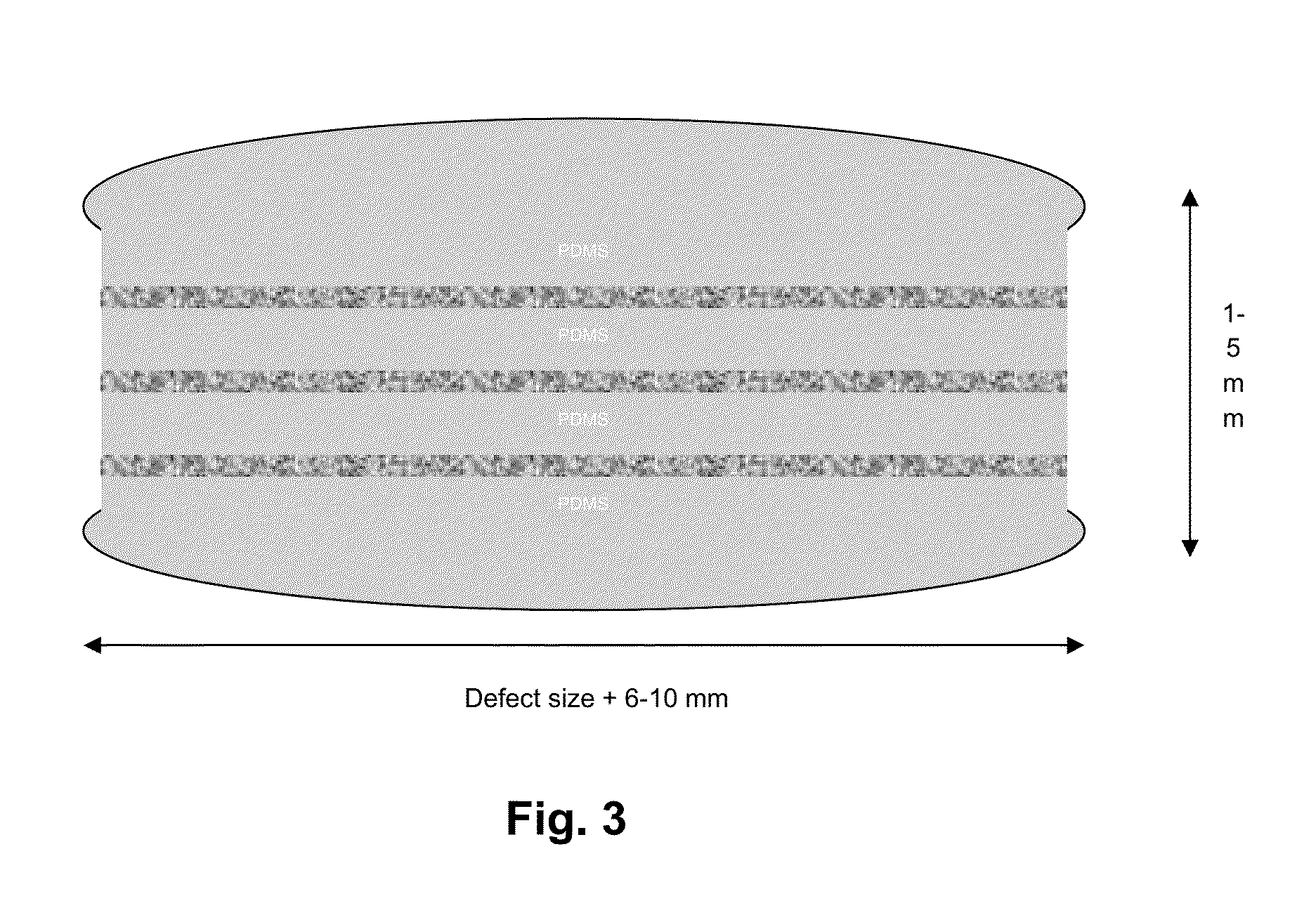Carbon nanotubes and graphene patches and implants for biological tissue
- Summary
- Abstract
- Description
- Claims
- Application Information
AI Technical Summary
Benefits of technology
Problems solved by technology
Method used
Image
Examples
example 1
Preparation of an Implant Comprising Carbon Nanotubes
[0220]One (1) milligram of arc-discharged carbon nanotubes (Hanwha Nanotech) was dissolved in ten (10) milliliters of dichloroethane and sonicated in a bath sonicator for four (4) hours to ensure uniform dispersion of the carbon nanotubes. The solution was then centrifuged at 1000 rpm for one (1) minute to obtain a clear solution of carbon nanotubes.
[0221]The resulting carbon nanotube solution was mixed with PDMS in a 1:3 weight ratio and a PDMS hardener was added. The solution was mixed, and when thoroughly mixed was kept under vacuum for one (1) hour to remove air bubbles in solution.
[0222]The resulting mixture was poured into a substrate to form a thin film. The film was hardened on a hot plate at 60° C. for twenty (20) minutes.
[0223]A schematic of this process and the resulting patch is shown in FIG. 1.
example 2
Further Preparation of Implants Comprising Carbon Nanotubes
[0224]Using the procedure of Example 1, implants were made using carbon nanotubes where the carbon nanotube solution was mixed with the PDMS in weight ratios ranging from 1:1.5 to 1:10, all with satisfactory results, illustrating that a range of weight ratios of carbon nanotubes to carrier can be used in the manufacture of the implants.
example 3
Preparation of an Implant Comprising Graphene
[0225]A large-scale graphene on copper foil was grown by the CVD growth method. Graphene on copper was laminated onto a thin PDMS film and copper was etched with ammonium persulfate solution.
[0226]After the copper was fully removed, the sample was gently rinsed with water and air dried.
[0227]PDMS which was pre-mixed with a hardener, was spincoated onto the graphene transferred PDMS film. The PDMS was baked at 60° C. to harden.
[0228]Another graphene on copper foil was laminated onto the film.
[0229]This process was repeated four or five times, to create a multilayer graphene patch.
[0230]A schematic of this process and the resulting patch is shown in FIG. 2.
PUM
 Login to View More
Login to View More Abstract
Description
Claims
Application Information
 Login to View More
Login to View More - R&D
- Intellectual Property
- Life Sciences
- Materials
- Tech Scout
- Unparalleled Data Quality
- Higher Quality Content
- 60% Fewer Hallucinations
Browse by: Latest US Patents, China's latest patents, Technical Efficacy Thesaurus, Application Domain, Technology Topic, Popular Technical Reports.
© 2025 PatSnap. All rights reserved.Legal|Privacy policy|Modern Slavery Act Transparency Statement|Sitemap|About US| Contact US: help@patsnap.com



